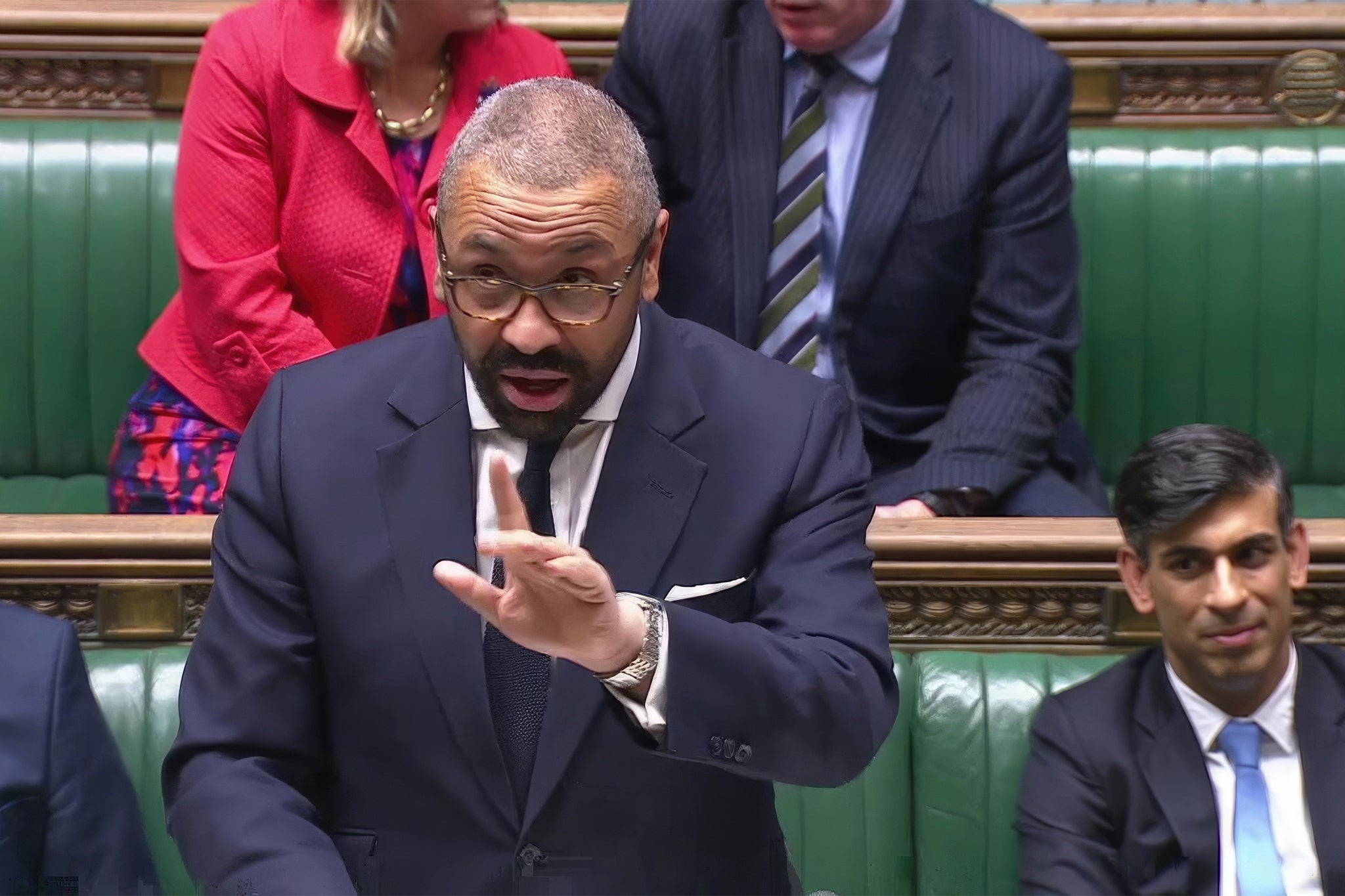Rishi’s ‘J-turn’ on migrant visas exposes this government’s heartless incompetence
The prime minister is supposed to be a details person – so why has he partly rowed back on his plan to raise the salary threshold for spousal visas to £38,700, asks John Rentoul


Rishi Sunak, the leader who was supposed to bring calm and competent administration to the turbulence of recent years, seemed to be taken by surprise by the publication last month of the figures for legal immigration.
Given that these statistics are published every six months, and so the annual figures always include one six-month period that has already been published, the rough scale of net immigration should not have been impossible to guess.
Yet the announcement by the Office for National Statistics that the total for last year had been revised up to 745,000 seemed to throw the government into a panic, and James Cleverly, the new home secretary, was sent to parliament 11 days later to announce a five-point plan to cut legal immigration.
The change to the rules for bringing a spouse into the country was not the most important of the five points measured by the numbers affected, but it quickly generated headlines about how unfair and arbitrary it was. Whereas you can currently bring a spouse, partner or child to the UK if you earn £18,600 a year, Cleverly announced that this figure would go up to £38,700 in spring next year, including for the renewal of existing visas.
Since then, Sunak and Cleverly have worked out that this cruel policy would continue to produce a flow of heartbreaking news stories in return for a small effect on the headline net immigration total. So yesterday, 17 days after the announcement, the Home Office slipped out a statement announcing a J-turn (a partial U-turn), saying that the income threshold would rise to £29,000 in spring, and that existing visa holders wouldn’t be affected.
The new policy remains restrictive – the Home Office says its potential effect is “uncertain” and that it will reduce immigration by “possibly low tens of thousands” – but it is less unfair, especially on people who already have visas. A lot of needless distress could have been saved if the government had got the policy right the first time.
The more important part of Cleverly’s five-point plan was the ban on care workers bringing in dependants. The Home Office estimates that this will cut immigration by 120,000 a year, which used to be about half of total net immigration in the pre-Brexit era. The biggest cut, though, will be achieved by the ban on masters students’ dependants, which had already been announced and will come into effect next month. That is expected to cut the figure by 140,000 a year.
These changes are not cost-free. Universities are one of our most successful export industries, and if care workers cannot bring dependants with them, it will cost more to employ them. Immigration has saved social care from collapse in recent years, but it would be better if we paid care workers more.
These are all challenges that a focused problem-solver such as Sunak should have identified some time ago. Instead, when he became prime minister, he made the vainglorious claim that he would “stop the boats”, which he seems unable to do, while appearing oblivious to legal immigration, which he can do something about.
It is not as if he wasn’t warned. Yvette Cooper, the shadow home secretary, has ruthlessly attacked the government from an unexpected anti-immigration position, pointing out that the shortage occupation list allows employers to pay immigrants 20 per cent less than the UK going rate. That is the point of the list, but it makes it look as if it is government policy to undercut the wages of British workers, and Sunak was slow to realise the danger of Cooper’s attack.
Belatedly, Cleverly’s five-point plan included ending the 20 per cent discount and a “review” of the shortage occupation list. But many of the numbers are already in the system. If the election is in October or November next year, the most up-to-date immigration statistics will be for the year just ending. A December election would allow the figures for the first half of 2024 to be published, which would allow the student dependants change to feed through, but the figures will still be added to those for the second half of this year to produce an annual number that will be much higher than the pre-Brexit norm.
Sunak’s focus tends to be on economic growth, although since he made “grow the economy” one of his five pledges 11 months ago, GDP has been flat. He understands how important immigration is to the economy, but he seems to have been taken by surprise by the political cost of the high level of legal immigration.
He has fixed the worst mistake of this month’s panicky five-point plan, but it is too late to get the big numbers down in time for the election.






Join our commenting forum
Join thought-provoking conversations, follow other Independent readers and see their replies
Comments